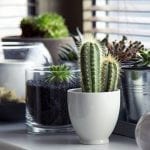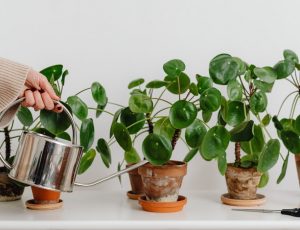
Indoor Water Garden: the How-to Guide to Decorating with Horticulture
Creating an indoor water garden is a great way to add décor to your home and channel your inner gardener. This unique indoor gardening style will draw the attention of all of your guests!
This article lists the basics of water gardening and which plants are best suited for this type of garden.
You’ll be glad to learn, adding an indoor water garden to your home is relatively simple! First, find a place in your home that gets sunlight for 4-6 hours daily -this is an ideal place for your water garden.
For areas in your home that lack sunlight, you can use artificial light to assure plants receive the necessary light. Fluorescent light bulbs are ideal artificial light for your indoor water garden, it is also cost-efficient and energy-efficient.
For more information on artificial lights check out this link.
Next, you’ll need to find a container for your garden. We recommend using clear glass containers so you can view and enjoy the development of the unique roots and stems of your plants.
The glass containers photoed above (photo courtesy of proflowers.com) are great examples of containers to use for an aquatic garden. What’s growing inside the container can be just as interesting as what’s growing outside the container.
You’ll also want to consider the style of your room when choosing your container- is it cohesive with the rest of the room? You can use anything from a basic glass jar to an intriguing vase you received as a gift but never had a use for.
Be sure to rinse your container with water thoroughly before making it part of your water garden. We do not recommend using detergent when cleaning your container, it can negatively affect your plants’ growth.
See a few different examples of containers that would be perfect for a water garden below!
Mason Jars
Mason jars are a great container to use for a small indoor water garden. You can easily find them in different colors which makes them perfect for either matching or contrasting from the colors of the plant(s) you chose.
You can place this type of container on a window sill or side table near a window to ensure your plant(s) receive direct sunlight.
Wine Decanters
Wine decanters create a fresh style for your water garden. You can either re-purpose an old decanter, or purchase a thrifty decanter at a local store.
With this type of container, you can add in many different plants because of the spacious size of the decanter. A wine decanter allows for enough room for plants’ roots to grow and has enough room for pebbles or soil to be added to the bottom of your container.
Decanters are also large enough to make a beautiful centerpiece for a table near a window.
There are three different types of plants you can use for a water garden: true aquatics, semi aquatics, and floaters. True aquatics can be placed fully underwater and need gravel or soil at the bottom of your container so the roots can grow successfully.
Semi aquatics should only place partially in water so the foliage will be on top of the water and the roots remain underwater. Floaters sit on top of the water and “float”.
There are a wide variety of plants that fall into these categories. Check out some of our favorite plants to grow in aquatic gardens below!
Lilies:
This colorful water thriving plant will light up your home. Placing pebbles at the bottom of your container and sticking the roots of the plant here is ideal.
The majority of the stem should be in the water and the lower section of the plant should be above the water or sitting on top of the water.
Spider Plants:
This indoor plant is perfect to grow in water. Spider plants don’t require much upkeep and improve your home’s air quality.
They are also very easy to propagate, so you could even gift a spider plant water garden to a friend! To find out more about spider plants, check out our blog article here.
Anubias:
You should keep pebbles or soil at the bottom of your container when growing Anubias so it can root itself to the bottom. This plant can be fully submerged in water, therefore falls under the true aquatics category. Anubias are frequently found in aquariums.
To change things up in your aquatic garden, you can add multiple types of plants to one container to create diversity and color.
In addition, you can even add a fish or two to your water garden if your container is large enough.
As a result of adding fish to your indoor water garden, your plants will be fertilized. The fish you add will also make your indoor water garden even more fun for the kids! They can learn about aquatic ecosystems, while you have beautiful new decoration in your home.
For more information on building an indoor water garden check out this website.
Why keep things indoors? Extend your water garden to your backyard! If you’d like to make an outdoor water garden, check out our blog post here.
(Photos courtesy of Didriks, ProFlowers, Meghan Hess, Joel Carnat)



















Kate Panthera
as far as adding fish to your plants in water, make sure you remember to feed the fish (i know that seems obvious, but sometimes folks don’t think things all the way through.) Also make sure the plant isn’t toxic and the fish and plant will co-exist with each other. Fish in the wild aren’t neighbors with terrestrial plants after all.